History of the Jews in England
The history of the Jews in England goes back to the reign of William the Conqueror. The first written record of Jewish settlement in England dates from 1070. The Jewish settlement continued until King Edward I's Edict of Expulsion in 1290. After the expulsion, there was no overt Jewish community (as opposed to individuals practising Judaism secretly) until the rule of Oliver Cromwell. While Cromwell never officially readmitted Jews to the Commonwealth of England, a small colony of Sephardic Jews living in London was identified in 1656 and allowed to remain.

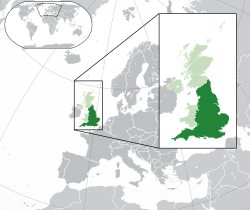
| This is a part of the series on |
| History of the Jews in England |
|---|
| Medieval |
| Blood libel in England |
| Modern |
| Related |
Part of a series on the |
|---|
| History of England |
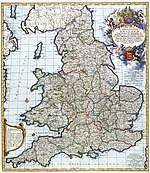 |
|
|
Topics
|
|
|
|
|
The Jewish Naturalisation Act of 1753, an attempt to legalise the Jewish presence in England, remained in force for only a few months. Historians commonly date Jewish Emancipation to either 1829 or 1858, though Benjamin Disraeli, born Jewish but converted to Anglicanism, had been elected twice as the Prime Minister of the United Kingdom in 1868 and in 1874. At the insistence of Irish leader Daniel O'Connell, in 1846 the British law "De Judaismo", which prescribed a special dress for Jews, was repealed.[1] Due to the lack of anti-Jewish violence in Britain in the 19th century, it acquired a reputation for religious tolerance and attracted significant immigration from Eastern Europe.[2] In the 1930s and 1940s, some European Jews, including almost 10,000 children, fled to England to escape the Nazis.
Jews faced antisemitism and stereotypes in Britain, and antisemitism "in most cases went along with Germanophobia" during World War I to the extent that Jews were equated with Germans, despite the English themselves, as well as the Royal family, having partial Germanic ethnic origins. This led many Ashkenazi Jewish families to Anglicise their often German-sounding names.[3]
Jews in Britain now number around 275,000, with almost all (over 260,000) of these in England, which contains the second largest Jewish population in Europe (behind France) and the fifth largest Jewish community worldwide.[4] The majority of the Jews in England live in and around London, with almost 160,000 Jews in London itself, and a further 20,800 just in Hertfordshire, mostly in Southwestern Hertfordshire. The next most significant population is in Greater Manchester, a community of slightly more than 25,000, primarily in Bury (10,360),[5] Salford (7,920),[6] Manchester proper (2,725)[7] and Trafford (2,490).[8] There are also significant communities in Leeds (6,760),[9] Gateshead (3,000),[10] Brighton (2,730),[11] Liverpool (2,330),[12] Birmingham (2,150)[13] and Southend (2,080).[14] Towns and villages in Hertfordshire with large absolute populations include Bushey (4,500), Borehamwood (3,900), and Radlett (2,300). It is generally believed that Jews are undercounted in censuses due to a disinclination on the parts of some community members to reveal their ethnoreligious background and practice, so these numbers may be low estimates.
Norman England, 1066–1290
There is no evidence of Jews residing in England before the Norman Conquest. The few references in the Anglo-Saxon Church laws relate to Jewish practices about Easter. William of Malmesbury states that William the Conqueror brought Jews from Rouen to England. William the Conqueror's object may be inferred: his policy was to get feudal dues paid to the royal treasury in coin rather than in kind, and for this purpose it was necessary to have a body of men scattered through the country who would supply quantities of coin.[15]
Status of Jews
Prior to their expulsion in 1290, the status of Jews in England was completely dependent on the will of the Crown. English Jews were legally under the jurisdiction of the king, who offered them protection in return for their economic function.[16] As "royal serfs," they were allowed freedom of the king's highways, exemption from tolls, the ability to hold land directly from the king, and physical protection in the vast network of royal castles built to assert Norman authority.[17]
The Jews of London were the responsibility of the Constable of the Tower and for this reason they were able to seek refuge in the Tower of London when at risk of mob violence. This was resorted to on a number of occasions, with large numbers staying there, sometimes for months at a time. There are records of a body of Jewish men-at-arms forming part of the garrison of the Tower in 1267, during a civil war.[18]
A clause to that effect was inserted under Henry I in some manuscripts of the so-called Leges Edwardi Confessoris ("Laws of Edward the Confessor"). Henry granted a charter to Rabbi Joseph, the chief Rabbi of London, and his followers. Under this charter, Jews were permitted to move about the country without paying tolls, to buy and sell, to sell their pledges after holding them a year and a day, to be tried by their peers, and to be sworn on the Torah rather than on a Christian Bible. Special weight was attributed to a Jew's oath, which was valid against that of twelve Christians. The sixth clause of the charter was especially important: it granted to Jews the right to move wherever they wanted, as if they were the king's own property ("sicut res propriæ nostræ").[15] As the king's property, English Jews could be mortgaged whenever the monarch needed to raise revenue and could be taxed without the permission of Parliament, eventually becoming the main taxpaying population.[19]
English Jews experienced a "golden age" of sorts under Henry II in the late 12th century due to huge economic expansion and increased demand for credit. Major Jewish fortunes were made in London, Oxford, Lincoln, Bristol, and Norwich.[20] The Crown, in turn, capitalized on the prosperity of its Jews. In addition to many arbitrary taxes, Richard I established the Ordinance of the Jewry in 1194 in an attempt to organize the Jewish community. It ensured that mandatory records would be kept by royal officials for all Jewish transactions. Every debt was recorded on a chirography to allow the king immediate and complete access to Jewish property.[21] Richard also established a special exchequer to collect any unpaid debts due after the death of a Jewish creditor. The establishment of the Exchequer of the Jews eventually made all transactions of the English Jewry liable to taxation by the king in addition to the 10% of all sums recovered by Jews with the help of English courts.[21] So, while the First and Second Crusades increased anti-Jewish sentiments, Jews in England went relatively unscathed beyond occasional fines and special levies. Though they did not experience the same kind of social mobility and cultural advancements that Jews under Muslim rule did, the Jews of England's population and prosperity increased under the protection of the king.[21]
The status of Jews in England dramatically worsened with the consolidation of governmental authority as well as the deepening of popular piety in the late 12th century; further isolating Jews from the greater English community. Though rulers of both church and state exploited and monopolized on the advancements in commerce and industry of English Jews, popular anti-Jewish sentiments grew as a result of their prosperity and relationship with the king and the courts.[22] External pressures such as the circulating myth of the blood libel, the religious tensions in light of the Crusades, and the interference of Pope Innocent III in the late 12th century created an increasingly violent environment for English Jews. Mob violence increased against the Jews in London, Norwich, and Lynn. Entire Jewries were murdered in York.[23] Because of their financial utility, however, English Jews were still offered royal protection, and Richard I continued to renew orders to protect the Jews, formalizing the Exchequer and designating "archae," or centralized record chests monitored by panels of local Christian and Jewish key holders to better protect records of all Jewish transactions.[22]
The incompetence of King John in the early 13th century depleted even the wealthiest Jews, and though they had more than a decade to recover, Henry III's equally mismanaged finances pressed roughly 70,000 pounds out of a population of only 5,000.[24] To do so, they had to sell off many of their mortgage bonds to wealthy nobles. The Jews then became a focal point of those debtors' hatred and mass violence spiked again in the mid-13th century. Their legal status, however, did not change until Henry's son, Edward I, took control of the Jewries. He issued restrictive statues, forbidding them from taking any more property into bond, the means by which they could lend money and how they lived. With almost all means of income denied them and property being confiscated, the Jewish population diminished. New waves of crusading zeal in the 1280s in conjunction with debt resentment pressured Edward into the expulsion of the depleted Jewish community in 1290.[25]
Attitudes of the kings
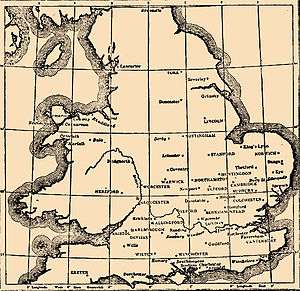
Gentile-Jewish relations in England were disturbed under King Stephen, who burned down the house of a Jew in Oxford (some accounts say with a Jew in it) because he refused to pay a contribution to the king's expenses. In 1144 came the first report in history of the blood libel against Jews; it came up in the case of William of Norwich (1144).[15] Anthony Julius finds that the English were endlessly imaginative in inventing antisemitic allegations against the Jews. He says that England became the "principal promoter, and indeed in some sense the inventor of literary anti-Semitism."[26] In his book, Julius argues that blood libel is the key, because it incorporates the themes that Jews are malevolent, constantly conspiring against Christians, powerful, and merciless. Variations include stories about Jews poisoning wells, twisting minds, and buying and selling Christian souls and bodies.
While the Crusaders were killing Jews in Germany, outbursts against Jews in England were, according to Jewish chroniclers, prevented by King Stephen.[27]
With the restoration of order under Henry II, Jews renewed their activity. Within five years of his accession Jews were found at London, Oxford, Cambridge, Norwich, Thetford, Bungay, Canterbury, Winchester, Stafford, Windsor, and Reading. Yet they were not permitted to bury their dead elsewhere than in London, a restriction which was not removed till 1177. Their spread throughout the country enabled the king to draw upon their resources as occasion demanded. He repaid them with demand notes on the sheriffs of the counties, who accounted for payments thus made in the half-yearly accounts on the pipe rolls (see Aaron of Lincoln). Strongbow's conquest of Ireland (1170) was financed by Josce, a Jew of Gloucester; and the king accordingly fined Josce for having lent money to those under his displeasure. As a rule, however, Henry II does not appear to have limited in any way the financial activity of Jews. The favourable position of English Jews was shown, among other things, by the visit of Abraham ibn Ezra in 1158, by that of Isaac of Chernigov in 1181, and by the immigration to England of Jews who were exiled from the king's properties in France by Philip Augustus in 1182, among them probably being Judah Sir Leon of Paris.[15]
In 1168, when concluding an alliance with Frederick Barbarossa, Henry II seized the chief representatives of the Jews and sent them to Normandy, and imposed a tallage on the rest of the community of 5,000 marks.[28] When, however, he asked the rest of the country to pay a tithe for the Crusade against Saladin in 1188, he demanded a quarter of all Jewish chattels. The so-called "Saladin tithe" was reckoned at £70,000, the quarter at £60,000. In other words, the value of the personal property of Jews was regarded as one-fourth that of the whole country. It is improbable, however, that the whole amount was paid at once, as for many years after the imposition of the tallage, arrears were demanded from the recalcitrant Jews.[15]
Aaron of Lincoln is believed to have been the wealthiest man in 12th century Britain. It is estimated that his wealth may have exceeded that of the king.[29] The king had probably been led to make this large demand on English Jewry's money by the surprising windfall which came to his treasury at Aaron's death in 1186. All property obtained by usury, whether by Jew or by Christian, fell into the king's hands on the death of the usurer; Aaron of Lincoln's estate included £15,000 worth of debts owed to him. Besides this, Aaron's large fortune passed to King Henry but much of it was lost on the journey to the royal coffers in Normandy. A special branch of the treasury, known as "Aaron's Exchequer,"[15] was established in order to deal with this large account.
During the earlier years of Henry II's reign Jews lived on good terms with their non-Jewish neighbours, including the clergy. They entered churches freely, and took refuge in the abbeys in times of commotion. Some Jews lived in opulent houses, and helped to build many of the abbeys and monasteries of the country. However, by the end of Henry's reign they had incurred the ill will of the upper classes. Anti-Jewish sentiment, fostered by the Crusades during the latter part of the reign of Henry, spread throughout the nation.[15]
Persecution and expulsion
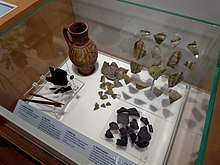
Persecution of England's Jews could be brutal; recorded are massacres at London[30] and York[31] during the crusades in 1189 and 1190.
To finance his war against Wales in 1276, Edward I of England taxed Jewish moneylenders. When the moneylenders could no longer pay the tax, they were accused of disloyalty. Already restricted to a limited number of occupations, Edward abolished their "privilege" to lend money, restricted their movements and activities and forced Jews to wear a yellow patch. The heads of Jewish households were then arrested with over 300 being taken to the Tower of London and executed. Others were killed in their homes.
On 17 November 1278 all Jews of England, believed to have numbered around 3,000, were arrested on suspicion of coin clipping and counterfeiting, and all Jewish homes in England were searched. At the time, coin clipping was a widespread practice, which both Jews and Christians were involved in, and a financial crisis resulted, and according to one contemporary source, the practice reduced the currency's value to half of its face value. In 1275, coin clipping was made a capital offence, and in 1278, raids on suspected coin clippers were carried out. According to the Bury Chronicle, "All Jews in England of whatever condition, age or sex were unexpectedly seized … and sent for imprisonment to various castles throughout England. While they were thus imprisoned, the innermost recesses of their houses were ransacked." Some 680 were detained in the Tower of London. More than 300 are believed to have been executed in 1279. Those who could afford to buy a pardon and had a patron at the royal court escaped punishment.[32]
Edward I increasingly showed antisemitism as in 1280 he granted a right to levy a toll on the rivulet bridge at Brentford "for the passage of goods over it, with a special tax at the rate of 1d. each for Jews and Jewesses on horse, 0.5d. each on foot from which all other travellers were exempt".[33] This antipathy eventually culminated in his legislating for the expulsion of all Jews from the country in 1290. Most were only allowed to take what they could carry. A small number of Jews favoured by the king were permitted to sell their properties first, though most of the money and property of these dispossessed Jews was confiscated. Almost all evidence of a Jewish presence in England would have been wiped out if it had not been for the efforts of one monk, Gregory of Huntingdon, who purchased all the Jewish texts he could to begin translating them.[15]
From then until 1655, there is no official record of Jews in England outside the Domus Conversorum, with a few exceptions such as Jacob Barnet, who was ultimately arrested and exiled.[34][35]
Resettlement period, 1655–1800s
Hidden Jews in England
Toward the middle of the 17th century a considerable number of Marrano merchants settled in London and formed there a secret congregation, at the head of which was Antonio Fernandez Carvajal and Samuel Maylott, a French merchant, who has many descendants in England. They conducted a large business with the Levant, East and West Indies, Canary Islands, and Brazil, and above all with the Netherlands and Spain.
Francis Drake's quartermaster in his circumnavigation of the globe was named as "Moses the Jew". There is evidence of Jews resident in Plymouth in the 17th century.[36]
Resettlement, 1655
In the 1650s, Menasseh Ben Israel, a rabbi and leader of the Dutch Jewish community, approached Oliver Cromwell with the proposition that Jews should at long-last be readmitted to England. Cromwell agreed, and although he could not compel a council called for the purpose in December 1655 to consent formally to readmission, he made it clear that the ban on Jews would no longer be enforced. In the years 1655–56, the controversy over the readmission of Jews was fought out in a pamphlet war. The issue divided religious radicals and more conservative elements within society. The Puritan William Prynne was vehemently opposed to permitting Jews to return, the Quaker Margaret Fell no less passionately in favour, like John Wemyss, a minister of the Church of Scotland. In the end, Jews were readmitted in 1655, and, by 1690, about 400 Jews had settled in England.[37] Emblematic of the progress in the social status of Jews was the knighting by William III of England in 1700 of Solomon de Medina, the first Jew to be so honoured.[38]
1700s
Jew Bill of 1753
The Jewish Naturalisation Act received royal assent on 7 July 1753 but was repealed in 1754 due to widespread opposition to its provisions.[39]
During the Jacobite rising of 1745, the Jews had shown particular loyalty to the government. Their chief financier, Samson Gideon, had strengthened the stock market, and several of the younger members had volunteered in the corps raised to defend London. Possibly as a reward, Henry Pelham in 1753 brought in the Jew Bill of 1753, which allowed Jews to become naturalised by application to Parliament. It passed the Lords without much opposition, but on being brought down to the House of Commons, the Tories made a great outcry against this "abandonment of Christianity", as they called it. The Whigs, however, persisted in carrying out at least one part of their general policy of religious toleration, and the bill was passed and received the royal assent (26 Geo. II., cap. 26).
In 1798 Nathan Mayer von Rothschild established a business in Manchester, and later N M Rothschild & Sons bank in London, having been sent to the UK by his father Mayer Amschel Rothschild (1744–1812). The bank funded Wellington in the Napoleonic wars, financed the British government's 1875 purchase of Egypt's interest in the Suez Canal and funded Cecil Rhodes in the development of the British South Africa Company. Beyond banking and finance, members of the Rothschild family in UK became academics, scientists and horticulturalists with worldwide reputations.
Emancipation and prosperity, 1800s
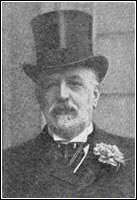
With Catholic Emancipation in 1829, the hopes of the Jews rose high; and the first step toward a similar alleviation in their case was taken in 1830 when William Huskisson presented a petition signed by 2,000 merchants and others of Liverpool. This was immediately followed by a bill presented by Robert Grant on 15 April of that year which was destined to engage the Parliament in one form or another for the next thirty years.
In 1837, Queen Victoria knighted Moses Haim Montefiore; four years later, Isaac Lyon Goldsmid was made a baronet, the first Jew to receive a hereditary title. The first Jewish Lord Mayor of London, Sir David Salomons, was elected in 1855, followed by the 1858 emancipation of the Jews. On 26 July 1858, Lionel de Rothschild was finally allowed to sit in the British House of Commons when the law restricting the oath of office to Christians was changed; Benjamin Disraeli, a baptised Christian of Jewish parentage, was already an MP.
In 1868, Disraeli became Prime Minister having earlier been Chancellor of the Exchequer. In 1884 Nathan Mayer Rothschild, 1st Baron Rothschild became the first Jewish member of the British House of Lords; again Disraeli was already a member. (Though born a Jew, Disraeli's baptism as a child qualified him as eligible for political aspirations, presenting no restrictions regarding a mandated Christian oath of office.)
By 1880 the flourishing Jewish community in Birmingham was centred on its synagogue. The men organised collective action to defend the reputation and promote the interests of the community. Rituals regarding funerals and burials brought together the rich and the poor, the men and the women. Intermarriage outside the community was uncommon. However, the arrival of East European Jews after 1880 caused a split between the older, assimilated, middle-class Anglicized Jews and the generally much poorer new immigrants who spoke Yiddish.[40]
By 1882, 46,000 Jews lived in England and, by 1890, Jewish emancipation was complete in every walk of life. Since 1858, Parliament has never been without practising Jewish members. At this time many of the Jews of the East End moved to more prosperous parts of East London such as Hackney (including Dalston and Stamford Hill), or to North London districts such as Stoke Newington and Canonbury.[41]
Synagogues were built openly, occasionally across the country as large, architecturally elaborate classical, romanesque, Italianate or Victorian gothic buildings such as Singers Hill Synagogue, in Birmingham. However, not all grand examples survive: for instance Dalston Synagogue (counter-intuitively not in Dalston, but in Newington Green, North London) in the last-mentioned style was in poor repair so its congregation sold its land for building of an apartment block and relocated in 1970.
All Jewish Rifle Volunteer Corps, 1861
The invasion scare of 1857 saw the creation of the Volunteer Force which included both Engineer and Rifle Volunteer Corps. These units were raised by local communities with the permission of their local Lord Lieutenant.
The Lord Lieutenant of the Tower Hamlets, an area larger than the modern borough and which stretched from Stepney to Stamford Hill, was the Constable of the Tower. With his permission, Jews from East London formed the East Metropolitan Rifle Volunteers (11th Tower Hamlets).
The Jewish Chronicle reported on the 165 Jewish volunteers, marching along with fife and drum as "a sight never before seen in Britain, and very rarely if ever since the rising of Bar Cocba"
Like most of the Volunteer Force units, the East Metropolitan Rifle Volunteers only existed for a short time before being merged with other (integrated) Tower Hamlets units, but their establishment stimulated debate in the Jewish community, at the time and subsequently, as to whether separate or integrated military units were more desirable.[42]
Modern times
1880s to 1920
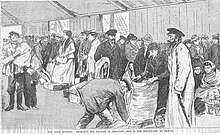
From the 1880s through the early part of the 20th century, massive pogroms and the May Laws in Russia caused many Jews to flee the Pale of Settlement. Of the East European Jewish emigrants, 1.9 million (80 percent) headed to the United States, and 140,000 (7 percent) to Britain. The chief mechanism was chain migration in which the first successful member(s) of the chain send information, local currency (and sometimes tickets or money for tickets) to later arrivals.[43]
In 1917, Walter Rothschild, 2nd Baron Rothschild set up the conditions for the Balfour Declaration, which promised a homeland in Palestine for Jews in a new Zionist State.
The Jewish population increased from 46,000 in 1880 to about 250,000 in 1919. They lived primarily in the large industrial cities, especially London, Manchester and Leeds. In London, many Jews lived in Spitalfields and Whitechapel, close to the docks, and hence the East End became known as a Jewish neighbourhood. Manchester, and neighbouring Salford, were also areas of Jewish settlement, particularly the Strangeways, Cheetham and Broughton districts. Unlike much of the Jewish community in Poland, the Jewish community in England generally embraced assimilation into wider English culture. They started Yiddish and Hebrew newspapers and youth movements such as the Jewish Lads' Brigade. Immigration was eventually restricted by the Aliens Act 1905, following pressure from groups such as the British Brothers League. The 1905 legislation was followed by the Aliens Restriction (Amendment) Act 1919.
Marconi Scandal (1912–1913)
The Marconi scandal brought issues of antisemitism into the political arena, on the basis that senior ministers in the Liberal government had secretly profited from advanced knowledge of deals regarding wireless telegraphy. Some of the key players were Jewish.[44] Historian Todd Endelman identifies Catholic writers as central critics:
- The most virulent attacks in the Marconi affair were launched by Hilaire Belloc and the brothers Cecil and G. K. Chesterton, whose hostility to Jews was linked to their opposition to liberalism, their backward-looking Catholicism, and the nostalgia for a medieval Catholic Europe that they imagined was ordered, harmonious, and homogeneous. The Jew baiting at the time of the Boer War and the Marconi scandal was linked to a broader protest, mounted in the main by the Radical wing of the Liberal Party, against the growing visibility of successful businessmen in national life and the challenges. What were seen as traditional English values.[45]
Historian Frances Donaldson says, "If Belloc's feeling against the Jews was instinctive and under some control, Chesterton's was open and vicious, and he shared with Belloc the peculiarity that the Jews were never far from his thoughts."[44][46]
First World War
About 50,000 Jews served in the British Armed Forces during World War I, and around 10,000 died on the battlefield, while Britain's first all-Jewish regiment, the Jewish Legion fought in Palestine. An important consequence of the war was the British conquest of the Palestinian Mandate, and the Balfour Declaration, making an agreement between the British Government and the Zionist Federation of Great Britain and Ireland to strive to set up a homeland for Jews in Palestine.
Entrepreneurs
The Eastern European Jews brought with them a long history as skilled entrepreneurial middlemen. They were much more likely to become entrepreneurs than their gentile neighbours, with a heavy concentration in the garment industry as well as in retailing, entertainment and real estate. London provided excellent financing opportunities for entrepreneurs.[47]
Sports
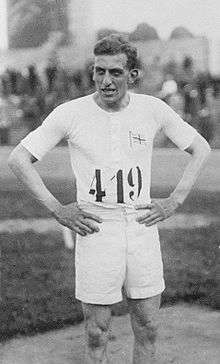
Antisemitism was a serious handicap for Britain's Jews, especially the widespread stereotype to the effect that Jews were weak, effeminate and cowardly. The Zionist social critic Max Nordau promoted the term "muscle Jew" as a rebuttal to the stereotype. Challenging that stereotype was an important motivation for wartime service in the Boer war and in the First World War. It was also motivation for sports that appealed to the largely working-class Jewish youth element.[48]
From the 1890s to the 1950s, British boxing was dominated by Jews whose families had migrated from Russia or the Austro-Hungarian Empire. Jews were heavily involved in boxing as professional and amateur fighters, managers, promoters, coaches and spectators—as well as gamblers and a certain criminal element that tried to fix fights.[49] Their high visibility in a prestigious sport among the British working class helped reduce antisemitism and increased their acceptance in British society.[50] The Jewish establishment worked hard to promote boxing among the youth, as a deliberate "Anglicisation" campaign designed to speed their adoption of British character traits and cultural values. The youth themselves eagerly participated, although the rising middle class status after the Second World War led to a sharp falloff of interest in younger generations.[51]
The most celebrated of the Jewish athletes in Britain was Harold Abrahams (1899–1978)-– the man made famous by the film Chariots of Fire for winning the gold medal in the 100 metre sprint in the 1924 Paris Olympics. Abrahams was thoroughly Anglicised, and his cultural integration went hand-in-hand with his sporting achievements. He became a hero to the British Jewish community. However, Abrahams' quest to enter upper class British society increasingly dominated his career, as his Jewishness meant less and less to him and his associates.[52]
Before and during World War II
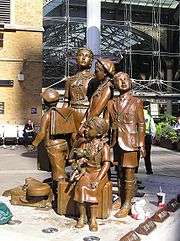
Though there was some growing antisemitism during the 1930s, it was counterbalanced by strong support for British Jews in their local communities leading to events such as the Battle of Cable Street where antisemitism and fascism was strongly resisted by socialists, trade unionists, Jews and their neighbours, who were successful in preventing a fascist march through a heavily Jewish area, despite police efforts to clear a path.
Consistent with its complex history, Britain was not particularly receptive to Jewish refugees fleeing the Nazi regime in Germany, and the other fascist states of Europe. Approximately 40,000 Jews from Austria and Germany were eventually allowed to settle in Britain before the War, in addition to 50,000 Jews from Italy, Poland, and elsewhere in Eastern Europe. Despite the increasingly dire warnings coming from Germany, Britain refused at the 1938 Evian Conference to allow further Jewish refugees into the country. The notable exception allowed by Parliament was the Kindertransport, an effort on the eve of war to transport Jewish children (their parents were not given visas) from Germany to Britain. Around 10,000 children were saved by the Kindertransport, out of a plan to rescue five times that number. See also Jews escaping from Nazi Europe to Britain.

With the declaration of war, 74,000 German, Austrian and Italian citizens in the UK were interned as enemy aliens. After individual consideration by tribunal, the majority, largely made up of Jewish and other refugees, were released within six months.
Even more important to many Jews was the permission to settle in the British-controlled Mandatory Palestine. In order to try to maintain peace between the Jewish and Arab populations, especially after the 1936–1939 Arab revolt in Palestine, Britain strictly limited immigration. This limitation became nearly absolute after the White Paper of 1939 all but stopped legal immigration. During the War, Zionists organised an illegal immigration effort, conducted by "Hamossad Le'aliyah Bet" (the precursor of the Mossad) that rescued tens of thousands of European Jews from the Nazis by shipping them to Palestine in rickety boats. Many of these boats were intercepted and some sank with great loss of life. The efforts began in 1939, and the last immigrant boat to try to enter Palestine before the end of the war was MV Struma, torpedoed in the Black Sea by a Soviet submarine in February 1942. The boat sank with the loss of nearly 800 lives.
Many Jews joined the British Armed Forces, including some 30,000 Jewish volunteers from Palestine alone, some of whom fought in the Jewish Brigade. Many formed the core of the Haganah after the war.
By July 1945, 228,000 troops of the Polish Armed Forces in the West, including Polish Jews, were serving under the high command of the British Army. Many of these men and women were originally from the Kresy region of eastern Poland and were deported by Soviet leader Joseph Stalin to Siberia 1939–1941. They were then released from the Soviet Gulags to form the Anders Army and marched to Persia to form the II Corps (Poland). The Polish II Corps then advanced to the British Mandate of Palestine, where many Polish Jews, including Menachem Begin, deserted to work on forming the state of Israel, in a process known as the 'Anders Aliyah'. Other Polish Jews remained in the Polish Army to fight alongside the British in the North Africa and Italy campaigns. Around 10,000 Polish Jews fought under the Polish flag – and British High Command – at the Battle of Monte Cassino.[53] All of them were eligible to settle in the UK after the Polish Resettlement Act 1947, Britain's first mass immigration law.
See also
|
|
References
- Jewish Ireland. Jewishireland.org
- "BBC - Religions - Judaism: Readmission of Jews to Britain in 1656".
- James Ciment, Thaddeus Russell (eds.), The Home Front Encyclopedia, Volume 1, ISBN 1576078493, p. 236
- London Jewish Museum reopens after major face-lift
- "Bury Census Demographics United Kingdom".
- "Salford Census Demographics United Kingdom".
- "Manchester Census Demographics United Kingdom".
- "Trafford Census Demographics United Kingdom".
- "Leeds Census Demographics United Kingdom".
- "Gateshead Census Demographics United Kingdom".
- "Brighton and Hove Census Demographics United Kingdom".
- "Liverpool Census Demographics United Kingdom".
- "Birmingham Census Demographics United Kingdom".
- "Southend-on-Sea Census Demographics United Kingdom".
- "England" Jewish Encyclopedia (1906)
- Romain, Jonathon (2013). Royal Jews: A Thousand Years of Jewish Life In and Around the Royal County of Berkshire. Grenfell. ISBN 978-0957698604.
- "The History of the Medieval Jews of England: Royal Wards". Oxford Jewish Heritage. Retrieved March 1, 2018.
- Jerusalem Post article relating to new exhibitions on Jewish history at the Tower
- "The History of the Medieval Jews of England". Oxford Jewish Heritage. Retrieved March 1, 2018.
- "A Golden Age for the Jews under Henry II (The First Angevin King)". Oxford Jewish History. Retrieved March 1, 2018.
- Skinner, Patricia, ed. (2012-07-19). Jews in Medieval Britain: Historical, Literary and Archaeological Perspectives (1st ed.). Woodbridge: Boydell Press. ISBN 9781843837336.
- Gross, Charles (2013). The Exchequer of the Jews of England in the Middle Ages: A Lecture Delivered at the Anglo-Jewish Historical Exhibition, Royal Albert Hall, 1887. Sagwan Press. ISBN 978-1376595949.
- "Beginnings of a Particular Hatred Myth: The Blood Libel". Oxford Jewish Heritage. Retrieved March 1, 2018.
- "Countdown: the Reigns of Henry III and his son Edward I". Oxford Jewish History. Retrieved March 1, 2018.
- "The End of the English Jewry, and the Medieval Tsarfatic Community". Oxford Jewish History. Retrieved March 1, 2018.
- Julius, Anthony (2010) Trials of the Diaspora: A History of Anti-Semitism in England. p. 153. ISBN 0199297053.
- "Hebräische Berichte," p. 64
- Gervase of Canterbury, ed. Stubbs, i. 205
- Chazan, Robert (2006). The Jews of Medieval Western Christendom: 1000–1500. New York: Cambridge University Press. p. 159. ISBN 978-0-521-84666-0.
- Roger of Hoveden. "The Persecution of Jews, 1189". Medieval Sourcebook. Fordham University. Retrieved January 2, 2012.
- York 1190: Jews and Others in the Wake of Massacre. March 2010. Archived from the original on January 17, 2012. Retrieved December 29, 2011.
- This day in Jewish history / All Jews of England arrested in "coin-clipping" scandal – Haaretz
- Robbins, Michael (2003) [1953]. Middlesex. Chichester: Phillimore. p. 77. ISBN 9781860772696.
- Marcus Roberts. "The strange story of Jacob Barnet". Retrieved 2010-04-28.
- Anthony Grafton. "A Sketch Map of a Lost Continent: The Republic of Letters". Retrieved 2010-04-28.
- Fry, Helen. The Jews of Plymouth. Halsgrove. 2015. p 7
- Shira Schoenberg. "The Virtual Jewish History Tour of England (Chapter 5: Readmission)". Retrieved April 21, 2012.
- "The Jews of the United Kingdom". The Museum of the Jewish People at Beit Hatfutsot. Retrieved 25 June 2018.
- Williams, Hywel (2005). Cassell's Chronology of World History. Weidenfeld & Nicolson. p. 316. ISBN 978-0-304-35730-7.
- Dick, Malcolm (2011). "Birmingham Anglo-Jewry c. 1780 to c. 1880: Origins, Experiences and Representations". Midland History. 36 (2): 195–214. doi:10.1179/004772911x13074595849031.
- "Hackney: Judaism | British History Online".
- Jewish Community Records Website https://www.jewishgen.org/JCR-UK/susser/twrhamlets.htm initially published in The Bulletin of the Military Historical Society, Vol. 48, No 191, February 1998
- Godley, Andrew (2001) Enterprise and Culture. New York: Palgrave. Ch. 1. ISBN 0333960459.
- Frances Donaldson (2011). The Marconi Scandal. Bloomsbury Publishing. p. 51. ISBN 9781448205547.
- Todd M. Endelman (2002). The Jews of Britain, 1656 to 2000. p. 9. ISBN 9780520227194.
- Dean Rapp, "The Jewish response to GK Chesterton's antisemitism, 1911–33." Patterns of Prejudice 24#2-4, (1990): 75–86. online
- Godley, Andrew (2001) Enterprise and Culture. New York: Palgrave. Ch. 2. ISBN 0333960459.
- Schaffer, Gavin (2012). "Unmasking the 'muscle Jew': the Jewish soldier in British war service, 1899–1945". Patterns of Prejudice. 46 (3): 375–396. doi:10.1080/0031322X.2012.701809.
- Berkowitz, Michael (2011). "Jewish Fighters in Britain in Historical Context: Repugnance, Requiem, Reconsideration". Sport in History. 31 (4): 423–443. doi:10.1080/17460263.2011.645334.
- Dee, David (2012). "'The Hefty Hebrew': Boxing and British-Jewish Identity, 1890–1960". Sport in History. 32 (3): 361–381. doi:10.1080/17460263.2012.720273.
- Dee, David (2012). "'The Sunshine of Manly Sports and Pastimes': Sport and the Integration of Jewish Refugees in Britain, 1895–1914". Immigrants & Minorities. 30 (2): 318–342. doi:10.1080/02619288.2010.502722.
- Dee, David (2012). "'Too Semitic' or 'Thoroughly Anglicised'? The Life and Career of Harold Abrahams". International Journal of the History of Sport. 29 (6): 868–886. doi:10.1080/09523367.2011.631006.
- Klieger, Noah (September 11, 2006) Army was Polish, soldiers were Jews. Ynetnews.com

Bibliography
- Carlos, Ann M., Karen Maguire, and Larry Neal. "‘A knavish people…’: London Jewry and the stock market during the South Sea Bubble." Business History (2008) 50#6 pp: 728–748.
- Endelman, Todd M. The Jews of Britain, 1656 to 2000 (Univ of California Press, 2002)
- Godley, Andrew. Jewish Immigrant Entrepreneurship in New York and London, 1880–1914 (2001)
- Green, Joseph. A Social History of the Jewish East End in London, 1914–1939: A Study of Life, labour, and liturgy (Edwin Mellen Press, 1991)
- Julius, Anthony. Trials of the Diaspora: A History of Anti-Semitism in England (Oxford University Press; 2010) 811 pages; Examines four distinct versions of English anti-Semitism, from the medieval era (including the expulsion of Jews in 1290) to what is argued is anti-Semitism in the guise of anti-Zionism today.
- Katz, David S. The Jews in the History of England, 1485–1850 (Oxford: Oxford University Press, 1994) xvi, 447 pp.
- Katz, David S. Philo-Semitism and the Readmission of the Jews to England, 1603–1655 (Oxford: Oxford University Press, 1982) x, 286 pp.
- Lipman, Vivian David. Social history of the Jews in England: 1850–1950 (1954)
- Mundill, Robin R. (2002), England's Jewish Solution, Cambridge, United Kingdom: Cambridge University Press, ISBN 978-0-521-52026-3, OL 26454030M
- Pollins, Harold. Economic history of the Jews in England (Fairleigh Dickinson University Press, 1982)
- Rabin, Dana Y. "The Jew Bill of 1753: Masculinity, virility, and the nation." Eighteenth-Century Studies (2006) 39#2 pp: 157–171.
Primary sources
- Richard of Devizes (1841), The chronicle of Richard of Devizes concerning the deeds of Richard the First, King of England, London: James Bohn, OCLC 4692428, OL 24872893M
External links
- The Jews of Angevin England; documents and records, from the Latin and Hebres sources, printed and manuscript by Joseph Jacobs, 1854-1916
- "Jews and Jewish communities in Great Britain 18th–20th centuries". The National Archives.
- York 1190: Jews and Others in the Wake of the Massacre (academic conference, March 2010)
- Virtual History Tour of Jewish England
- England related articles in the Jewish Encyclopedia
- Articles on British Jewish history
- Jews in England 1066–1290, 1553–1970 (from Encyclopaedia Judaica 1971)
- Words of English Thinkers on the Jewish People
- Jewish Communities & Records – United Kingdom
- Tracing the First Jews of Britain
- Chabad-Lubavitch Centers in England
- The Jewish Chronicle (UK)
- A reading of Israel Zangwill's historical satire The King of Schnorrers (1894)
- "Immigration and Emigration – The world in a city: East End Jews". BBC. February 2004.

